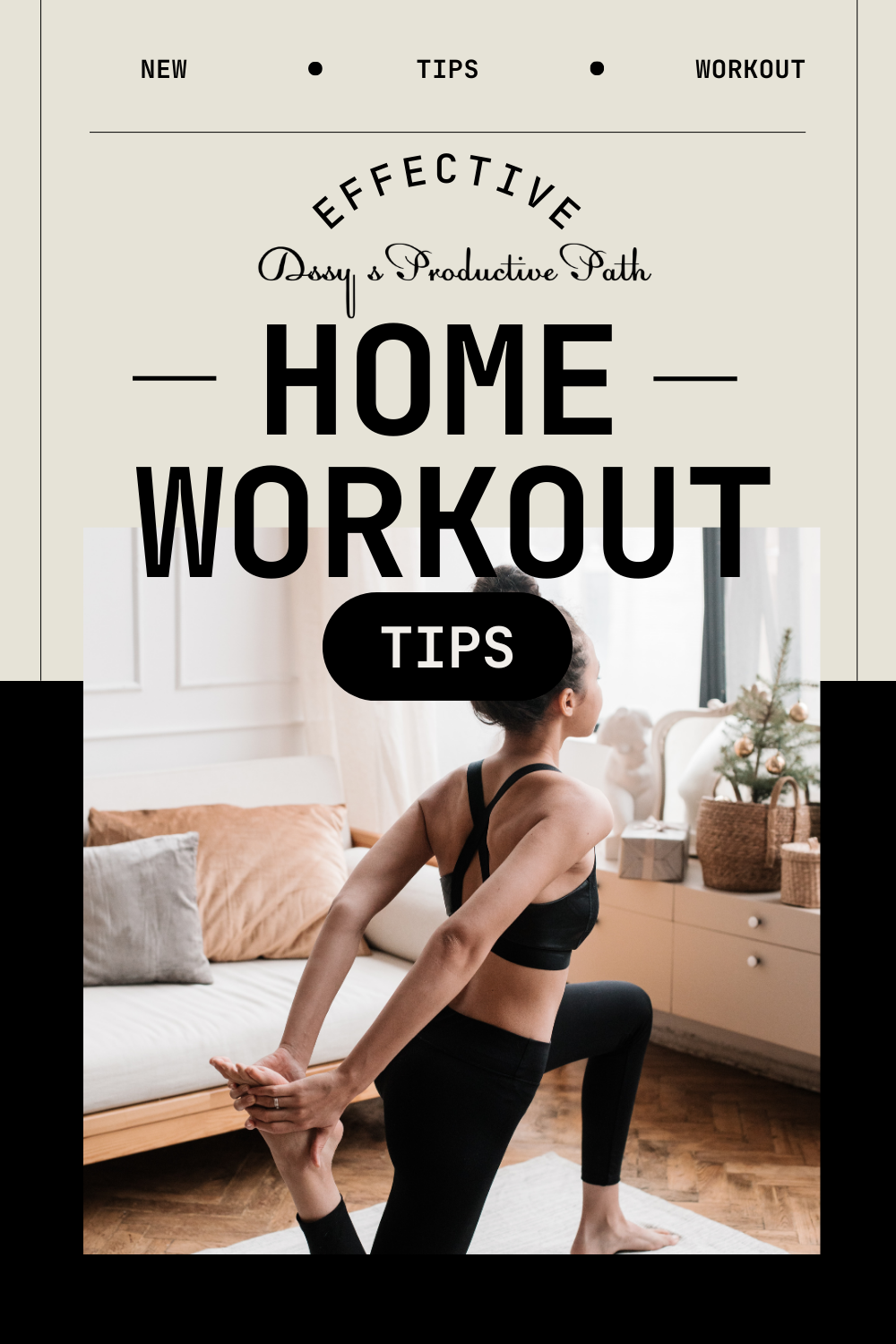Comprehensive Guide to Effective Home Workouts
Staying fit at home can be incredibly effective and convenient if you approach it with the right strategies and mindset. Here’s an extensive guide to help you maximize your home workouts, stay motivated, and achieve your fitness goals.
1. Set Clear, Achievable Goals
- Define Your Objectives: Identify specific fitness goals such as weight loss, muscle gain, improved endurance, or enhanced flexibility. Clear goals provide direction and motivation.
- Break Down Goals: Set short-term milestones that lead to your long-term goals. For example, aim to lose 1-2 pounds per week or increase the number of push-ups you can do by five each week.
- Write Them Down: Document your goals and revisit them regularly to track your progress and stay focused.
2. Create a Dedicated Workout Space
- Choose a Consistent Spot: Designate an area in your home for exercise. This helps create a routine and sets a physical reminder of your commitment to fitness.
- Keep It Organized: Store your workout gear, such as mats, dumbbells, resistance bands, and water bottles, in this space to keep everything easily accessible and reduce setup time.
- Personalize Your Space: Add motivational posters, mirrors to check your form, and any equipment you frequently use.
3. Plan Your Workouts
- Weekly Schedule: Outline your workouts for the week, balancing different types of exercises (strength, cardio, flexibility) to ensure a comprehensive routine.
- Daily Routine: Have a set plan for each workout day, including warm-ups, the main workout, and cool-downs. This structure helps keep you on track and motivated.
- Be Flexible: Allow some flexibility in your schedule to adapt to unexpected events without feeling discouraged.
4. Warm-Up Properly
- Increase Blood Flow: Start with 5-10 minutes of light cardio, like jogging in place, jumping jacks, or a brisk walk, to get your blood flowing and muscles warmed up.
- Dynamic Stretches: Perform dynamic stretches that mimic the movements of your workout to prepare your muscles and joints. Examples include leg swings, arm circles, and torso twists.
5. Incorporate a Variety of Exercises
- Bodyweight Exercises: Utilize exercises such as push-ups, squats, lunges, planks, and burpees for effective strength training without any equipment.
- Minimal Equipment: Integrate equipment like dumbbells, resistance bands, and kettlebells to add resistance and variety to your workouts.
- Mix It Up: Include different types of workouts like HIIT (High-Intensity Interval Training), yoga, pilates, and traditional strength training to keep things interesting and challenge your body in different ways.
6. Focus on Form and Technique
- Quality Over Quantity: Proper form is crucial to avoid injuries and get the most out of your exercises. Watch instructional videos, use a mirror, or get feedback from a virtual trainer to check your technique.
- Slow and Controlled Movements: Focus on performing each movement slowly and with control, especially during strength training, to maximize muscle engagement and effectiveness.
7. Progressive Overload
- Gradually Increase Intensity: To continue making progress, gradually increase the difficulty of your workouts by adding more reps, sets, weight, or reducing rest time.
- Track Your Progress: Keep a workout journal or use a fitness app to record what you did each session and monitor your improvements over time.
- Set New Challenges: Regularly update your goals to keep challenging your body and preventing plateaus.
8. Incorporate Cardio
- HIIT Workouts: High-Intensity Interval Training (HIIT) combines short bursts of intense exercise with rest or lower-intensity periods, making it an effective way to burn fat and improve cardiovascular fitness.
- Steady-State Cardio: Activities like running, cycling, or brisk walking can be done around your neighborhood or on a treadmill/bike if you have one at home.
- Fun Cardio Options: Consider dance workouts, jump rope, or even playing sports like basketball or soccer for a fun way to get your heart rate up.
9. Flexibility and Recovery
- Stretching: Include stretching in your routine, both during warm-ups and cool-downs, to improve flexibility and reduce muscle stiffness.
- Yoga and Pilates: These practices are excellent for enhancing flexibility, core strength, and mental relaxation. Incorporate them into your routine at least once or twice a week.
- Massage and Foam Rolling: Use foam rollers or massage balls to release muscle tension and improve blood flow to aid recovery.
10. Rest and Recovery
- Rest Days: Schedule regular rest days to allow your muscles to recover and grow. Overtraining can lead to injuries and burnout.
- Active Recovery: On rest days, engage in light activities like walking, gentle stretching, or yoga to keep your body moving without putting too much strain on it.
- Sleep: Aim for 7-9 hours of sleep per night to support muscle recovery and overall health.
11. Nutrition and Hydration
- Balanced Diet: Fuel your body with a balanced diet rich in protein, healthy fats, and complex carbohydrates. Proper nutrition supports muscle recovery and energy levels.
- Stay Hydrated: Drink plenty of water before, during, and after workouts to maintain hydration and performance.
- Pre- and Post-Workout Nutrition: Eat a small meal or snack with a balance of protein and carbs before your workout for energy, and consume protein and carbs after to aid recovery.
12. Stay Motivated
- Set Short-Term Goals: Achievable milestones can keep you motivated. Celebrate small victories along the way to your larger goals.
- Workout Buddy: If possible, find a workout partner to stay accountable and make exercising more enjoyable.
- Fitness Apps and Videos: Use technology to your advantage with fitness apps, YouTube workout videos, or virtual classes to keep your routine fresh and engaging.
- Motivational Quotes and Music: Create a playlist of your favorite workout music or put up motivational quotes in your workout space to keep you inspired.
13. Monitor Your Progress
- Fitness Journal: Keep a journal to track your workouts, nutrition, and how you feel each day. This helps you stay accountable and make adjustments as needed.
- Photos and Measurements: Take before-and-after photos and body measurements to visually track your progress over time.
- Fitness Tests: Periodically test your fitness levels (e.g., how many push-ups you can do in a minute, how long you can hold a plank) to measure improvements.
14. Listen to Your Body
- Avoid Overtraining: Pay attention to signs of fatigue or pain and take rest days when needed. Pushing through pain can lead to injuries.
- Adapt to Your Needs: Modify exercises if you have any physical limitations or if certain movements cause discomfort. It’s important to listen to your body and make adjustments to your routine as necessary.
15. Include Fun and Variety
- Try New Workouts: Experiment with different types of workouts like dance classes, martial arts, or sports to keep things interesting.
- Mix Up Music: Create different workout playlists to keep your energy levels high and your workouts enjoyable.
- Challenge Yourself: Set fun challenges, like completing a certain number of workouts in a month or mastering a new exercise.


